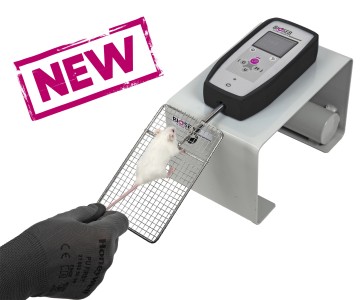Authors
M. Fréret, L. Drouot, A. Obry, S. Ahmed-Lacheheb, C. Dauly et al.
Lab
Institute for Research and Innovation in Biomedicine, Normandie University, Rouen, France
Journal
The American Journal of Pathology
Abstract
Muscle fibers do not normally express major histocompatibility complex class I (MHC-I) molecules, and their reexpression is a hallmark of inflammatory myopathies. It has been shown in mice that overexpression of MHC-I induces a poorly inflammatory myositis accompanied by the unfolded protein response (UPR), but it is unclear whether it is attributable to T-cell–mediated MHC-I–dependent immune responses or to MHC-I forced expression per se. Indeed, besides presenting antigenic peptides to CD8+ T cells, MHC-I may also possibly exert nonimmunologic, yet poorly understood pathogenic effects. Thus, we investigated the pathogenicity of MHC-I expression in muscle independently of its immune functions. HT transgenic mice that conditionally overexpress H-2Kb in muscle were bred to an immunodeficient Rag2−/− background. The muscle proteome was analyzed by label-free high-resolution protein quantitation and Western blot. Despite the absence of adaptive immunity, HT Rag2−/− mice developed a very severe myopathy associated with the cytoplasmic accumulation of H-2Kb molecules. The UPR was manifest by up-regulation of characteristic proteins. In humans, we found that HLA class I molecules not only were expressed at the sarcolemma but also could accumulate intracellularly in some patients with inclusion body myositis. Accordingly, the UPR was triggered as a function of the degree of HLA accumulation in myofibers. Hence, reexpression of MHC-I in normally negative myofibers exerts pathogenic effects independently of its immune function.
BIOSEB Instruments Used
Grip strength test (BIO-GS3)
Source :
http://www.sciencedirect.com/science/article/pii/S0002944013004094

 Pain - Thermal Allodynia / Hyperalgesia
Pain - Thermal Allodynia / Hyperalgesia Pain - Spontaneous Pain - Postural Deficit
Pain - Spontaneous Pain - Postural Deficit Pain - Mechanical Allodynia / Hyperalgesia
Pain - Mechanical Allodynia / Hyperalgesia Learning/Memory - Attention - Addiction
Learning/Memory - Attention - Addiction Physiology & Respiratory Research
Physiology & Respiratory Research











![Dynamic Weight Bearing 2.0 – Postural Module [Add-on]](https://bioseb.com/733-home_default/dynamic-weight-bearing-20-add-on-postural-module.jpg)
























 Pain
Pain Central Nervous System (CNS)
Central Nervous System (CNS) Neurodegeneration
Neurodegeneration Sensory system
Sensory system Motor control
Motor control Mood Disorders
Mood Disorders Other disorders
Other disorders Muscular system
Muscular system Joints
Joints Metabolism
Metabolism Cross-disciplinary subjects
Cross-disciplinary subjects CONFERENCES & MEETINGS
CONFERENCES & MEETINGS 